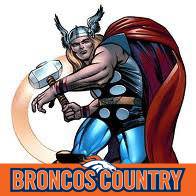Where did the candy cane originate?
A candy cane is a cane-shaped stick candy often associated with Christmas, as well as Saint Nicholas Day. It is traditionally white with red stripes and flavored with peppermint, but they also come in a variety of other flavors and colors.
According to a folklore, in 1670, in Cologne, Germany, the choirmaster at Cologne Cathedral, wishing to remedy the noise caused by children in his church during the Living Crèche tradition of Christmas Eve, asked a local candy maker for some "sugar sticks" for them.
In order to justify the practice of giving candy to children during worship services, he asked the candy maker to add a crook to the top of each stick, which would help children remember the shepherds who visited the infant Jesus. In addition, he used the white colour of the converted sticks to teach children about the Christian belief in the sinless life of Jesus.
From Germany, candy canes spread to other parts of Europe, where they were handed out during plays reenacting the Nativity. As such, the candy cane became associated with Christmastide.
A record of the 1837 Exhibition of the Massachusetts Charitable Mechanic Association, where confections were judged competitively, mentions "stick candy". A recipe for straight peppermint candy sticks, white with coloured stripes, was published in 1844.
More Info:
en.wikipedia.org










